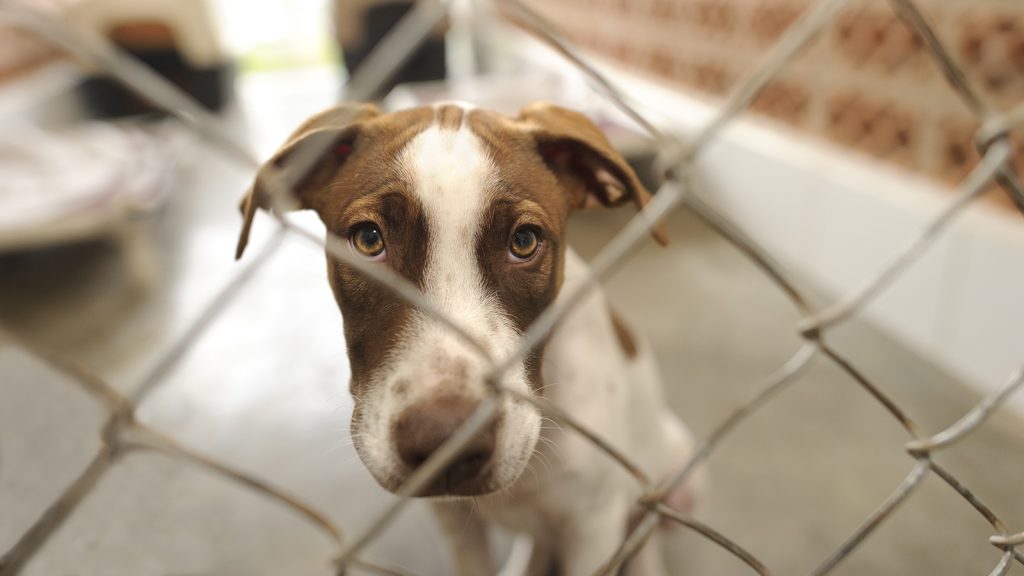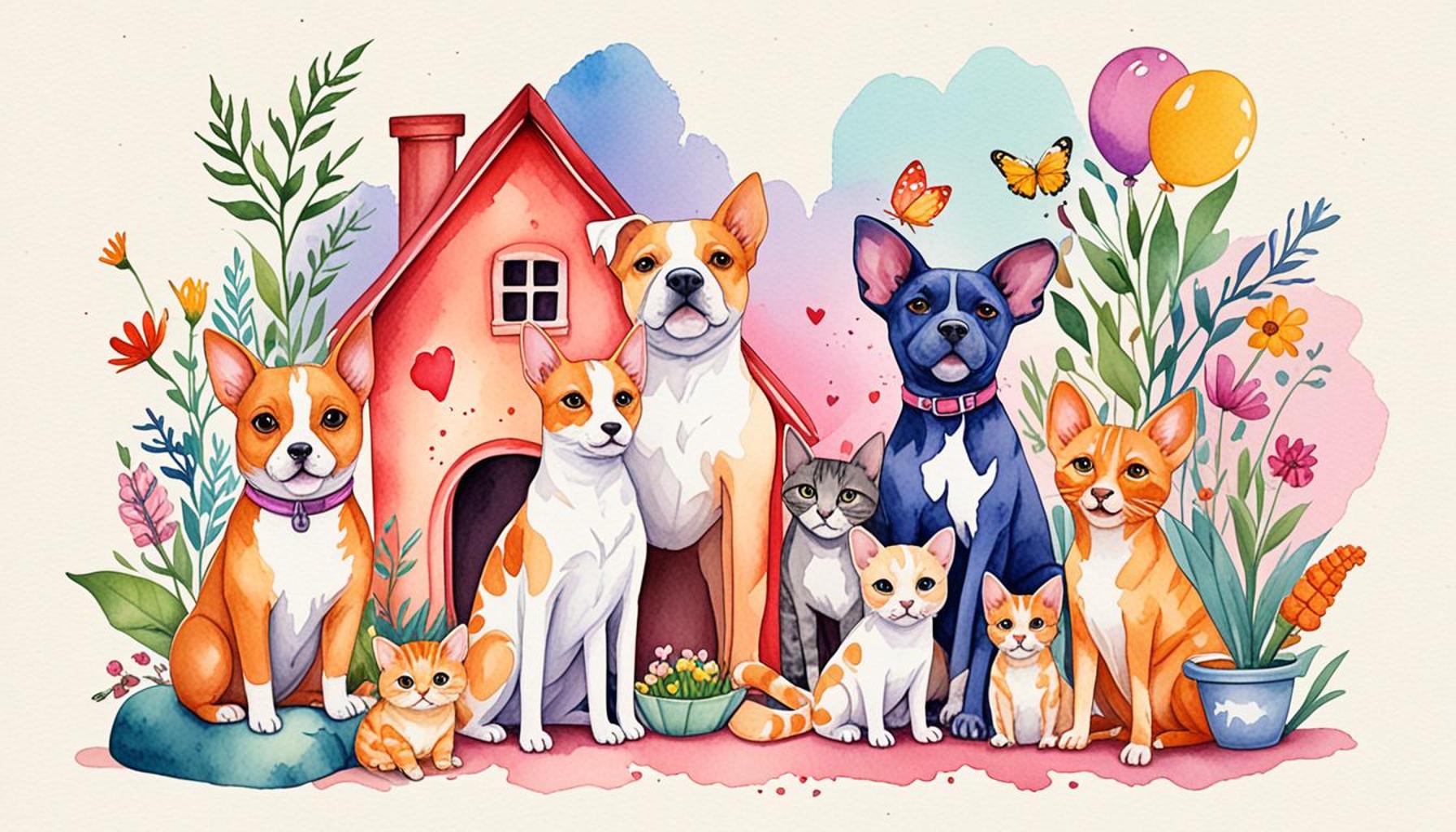The Role of Social Media in Promoting Animal Adoption: Connecting Pets to Families

The Transformative Power of Social Media in Animal Adoption
In the age of the internet, social media has not only shaped our personal relationships but has also created significant shifts in the way organizations promote important causes, including animal adoption. With platforms such as Facebook, Instagram, and Twitter at their disposal, animal shelters and rescue organizations have found innovative ways to connect with communities, drive awareness, and ultimately help in rehoming countless pets across the nation.
The Role of Viral Campaigns
Viral campaigns play a pivotal role in shining a spotlight on adorable pets in need of forever homes. Animal shelters often post heartwarming photos and moving stories of their animals, which can quickly go viral, thanks to the shareability of social media. A recent example is the “#WasabiTheRescueCat” phenomenon, where a cat’s transformation story captured the internet’s affection, leading to a surge in adoption inquiries as well as donations for the shelter. When a post resonates, it can create ripples, bringing together potential adopters who might not have considered adopting a pet otherwise.
Engaging Storytelling Captures Hearts
Engaging storytelling is another powerful aspect of social media that influences pet adoption. Organizations often share not just the pictures of the animals, but also their backgrounds, personalities, and quirks. For instance, posts that describe a dog’s life journey from abandonment to recovery, combined with an appealing photo, create an emotional connection that encourages potential adopters to consider giving that pet a home. This approach makes adopting a pet more than just a transaction; it becomes a story of second chances and mutual companionship.
Real-Time Engagement During Events
Many shelters leverage real-time updates through social media during adoption events, which can significantly enhance visibility and engagement. By posting live updates, sharing photos of pets being showcased, and even livestreaming interactions with animals, shelters maintain a dynamic and interactive presence that attracts prospective adopters. For example, during the annual “Clear the Shelters” event, real-time posts can lead to spontaneous visits and quick adoptions, allowing animals to go from shelter to home in just a matter of hours.
Building Community and Raising Awareness
Social media is not just a tool for rehoming animals; it fosters a sense of community. Hashtags such as #AdoptDontShop are widely recognized across platforms, championing the message that adopting from a shelter is a noble choice. These hashtags are instrumental in raising awareness about animal welfare and directing traffic to organizations that desperately need support.

The connection formed through social media transcends mere interaction; it builds a movement. Individuals scrolling through their feeds can become part of that movement, finding joy and purpose in the act of pet adoption. Social media equips organizations with the ability to communicate their mission effectively, educate the public, and engage new supporters, all of which further amplifies their impact on animal welfare.
In conclusion, the power of social media in promoting animal adoption is undeniable. It facilitates deeper connections between animals in need and families looking for loving companions, creating a life-altering experience for both parties involved. As we continue to explore the potentials of digital interactions, it becomes clear that social media is a vital ally in the pursuit of a more humane and compassionate world for our animal friends.
DIVE DEEPER: Click here to discover how pets can uplift your spirit
Strategies for Effective Social Media Engagement
In order to effectively promote animal adoption, organizations must harness strategies for effective social media engagement. Each platform offers unique features that can be tailored to capture the interests of potential adopters. By effectively utilizing images, videos, and interesting captions, shelters can create compelling content that not only showcases the pets but also tells their stories in a relatable manner. Here are some key strategies that organizations can implement:
- High-Quality Visuals: Eye-catching photos and videos of animals can easily attract attention. Research indicates that posts with visually appealing content receive significantly higher engagement, leading to increased shares and likes.
- Breed-Specific Content: Tailoring content to target specific breeds or types of pets can help reach niche audiences. For instance, creating posts about unique needs and qualities of senior dogs might resonate with families looking for a quiet and loving companion.
- Interactive Content: Engaging followers through polls, quizzes, and open-ended questions fosters a sense of community. By asking questions such as “What’s the best name for our newest rescue pup?” organizations can invite direct participation, making followers feel more invested.
- Utilizing Stories and Reels: Features like Instagram Stories and Reels provide a platform for behind-the-scenes content, allowing potential adopters to see the day-to-day activities at shelters. This transparency builds trust and promotes connection.
- Highlighting Success Stories: Sharing successful adoption stories helps to inspire and motivate others to consider bringing a pet home. Showcasing “before and after” photos allows followers to witness the positive transformation of animals, reinforcing the impact of their support.
Leveraging Influencer Partnerships
In addition to employing effective engagement strategies, organizations are increasingly turning to influencer partnerships as a means of extending their reach. With the rise of pet influencers on social media, shelters can collaborate with these popular figures to raise awareness about adoptable pets. For instance, an influencer taking their rescue dog to a prominent public event or simply posting about their experiences can capture the attention of thousands of potential adopters. Such collaborations harness the influencer’s established audience, transforming casual viewers into potential life-savers for homeless animals.
According to a survey conducted by the American Society for the Prevention of Cruelty to Animals (ASPCA), approximately 25% of U.S. households own a dog and 17% own a cat. These statistics emphasize the vital role that social media plays in connecting the right pets to families. By leveraging the power of both engaging content and influencer partnerships, organizations can significantly raise awareness, foster community support, and ultimately increase the number of successful adoptions across the country.
As social media continues to evolve, remaining adaptable and responsive to new trends will be crucial for animal shelters aiming to maximize their outreach efforts. With the right tools and strategies, social media will remain a formidable ally in the quest to connect pets to loving families.
The Impact of Social Media Campaigns
Social media platforms such as Facebook, Instagram, and Twitter are transforming the landscape of animal adoption. Organizations are leveraging the power of these platforms to create engaging content that resonates with pet lovers. Viral campaigns showcasing adorable animals ready for adoption often lead to increased interest and foot traffic to shelters. A case study from a local shelter reveals that a single post featuring a rescued puppy received over 10,000 shares, resulting in 50 adoption inquiries within just 24 hours. The visually stimulating nature of social media makes it an ideal medium for displaying the unique personalities and charm of each pet, capturing the hearts of potential adopters.
Community Building and Outreach
Moreover, social media fosters a sense of community among pet lovers, helping to create networks that support animal welfare initiatives. Campaigns often encourage followers to share their own adoption stories or foster experiences, amplifying the message of compassion. The use of hashtags like #AdoptDontShop not only spreads awareness but also creates a grassroots movement that can influence public opinion and promote responsible pet ownership. This network effect can lead to communities banding together, hosting events, and raising funds for local shelters. As the connections grow through social media, so does the collective effort to secure loving homes for homeless animals.
Visual Storytelling Techniques
Visual storytelling plays a crucial role in these campaigns. High-quality images and videos, whether showcasing a playful kitten or a heartwarming reunion between an adopted pet and its new family, capture attention far more effectively than traditional advertising could. Interactive content, such as live adoption fairs streamed on Facebook, allows potential adopters to meet animals in real-time, creating an emotional bond that is fundamental to the adoption process. The immediacy of social media also enables shelters to quickly inform followers of urgent needs, including those animals most at risk of being overlooked. The rapid response facilitated by these platforms underscores their essential role in advocating for animals in need.
Building Trust and Awareness
Ultimately, social media does not just increase numbers; it builds awareness about the importance of adoption and responsible pet ownership. Through educational posts about pet care, spaying and neutering, and the responsibilities of pet ownership, organizations utilize their platforms to educate potential adopters. The blend of engaging content and educational resources creates an informed audience that is more likely to consider adoption as a viable option.
DISCOVER MORE: Click here to learn the myths and truths of effective cat training
Building a Community of Animal Lovers
The power of social media extends beyond promoting individual animals in need of homes; it also serves as a platform for building a community of animal lovers. This sense of community is vital for sustaining interest in animal adoption, as it cultivates a supportive environment for both adopters and shelters alike. Engaging followers through a shared passion for animal welfare can transform casual supporters into active advocates. Here are several ways that organizations can strengthen this sense of community:
- Creating Dedicated Groups: Establishing Facebook groups or similar forums specifically for pet adoption enthusiasts encourages discussions around pets available for adoption, sharing experiences, and providing advice. These spaces can become invaluable resources for potential adopters, allowing them to connect with others who share the same commitment to animal welfare.
- Monthly Challenges and Campaigns: Implementing initiatives, such as “Adopt-a-Pet Month” or photo contests showcasing pets in their new homes, can increase engagement while also spotlighting the joys of pet ownership. Monthly themed challenges encourage participants to actively share their journeys, creating a ripple effect of awareness about the importance of adoption.
- Live Events and Virtual Meet-and-Greets: Hosting live events on platforms like Instagram and Facebook allows organizations to communicate in real-time with their audience. Virtual pet meet-and-greets enable potential adopters to interact with animals, asking questions and gaining insights directly from volunteers and staff, thereby facilitating the emotional connection necessary for adoption.
- Educational Content: Providing valuable resources, such as training tips, nutrition advice, and health care recommendations, positions organizations as knowledgeable advocates for potential adopters. Educational content not only attracts individuals considering adoption but also empowers them with essential information, enhancing their confidence in making the right choice.
Tracking Success through Metrics
Utilizing social media analytics tools can significantly enhance the effectiveness of animal adoption campaigns. Metrics such as engagement rates, follower growth, and conversion rates help organizations understand what resonates with their audience. By analyzing this data, shelters can refine their approaches, focusing on the types of content that drive the most interaction. For instance, if a particular post featuring a dog in need of a home gains widespread attention, replicating that style or format with other adoptable pets can amplify visibility.
Moreover, many organizations can benefit from monitoring national trends. According to the National Animal Control Association, there has been an upward trend in pet adoption, partly attributed to the growing influence of social media. The increase in demand for pets during the pandemic pushed many to seek companionship, further underscoring the importance of timely and strategic outreach through platforms like Instagram, Facebook, and TikTok.
Using data-driven insights empowers shelters to not only maximize their social media presence but also tailor their messages to cater to the hearts of potential adopters. By understanding the behaviors and preferences of their audience, organizations can create campaigns that not only inform but inspire, ultimately leading to higher rates of animal adoption and creating more forever homes.
DISCOVER MORE: Click here for effective training techniques
Conclusion: The Digital Bridge to Forever Homes
The role of social media in promoting animal adoption has blossomed into a crucial force for change. As we have explored, platforms like Facebook, Instagram, and TikTok not only showcase individual animals looking for homes but also foster a vibrant community of pet lovers dedicated to supporting animal welfare. By connecting potential adopters to shelters and rescues through engaging content, educational resources, and community-building initiatives, social media acts as a transformative bridge that connects pets with loving families.
With an increasing number of success stories fueled by engaging campaigns and dedicated online groups, the collective impact of these efforts cannot be overstated. From the emotional pull of “paw-some” snapshots to virtual meet-and-greets that facilitate direct interactions, these digital narratives create a compelling case for pet adoption, transforming lives on both ends of the leash. As organizations utilize analytics to refine their strategies, personalization and outreach continue to improve, further persuading individuals to consider adopting rather than purchasing pets.
Looking ahead, as trends indicate a sustained interest in pet adoption, there is a unique opportunity for shelters, advocates, and animal lovers to harness the full potential of social media. This platform not only aids in sharing stories and statistics but also fuels an emotional connection that often leads to adoption. It is imperative to continue leveraging these tools responsibly, emphasizing the joy and benefits of pet companionship. By further committing to these efforts, we can ensure that countless animals find their forever homes, thereby enriching the lives of families across America.


